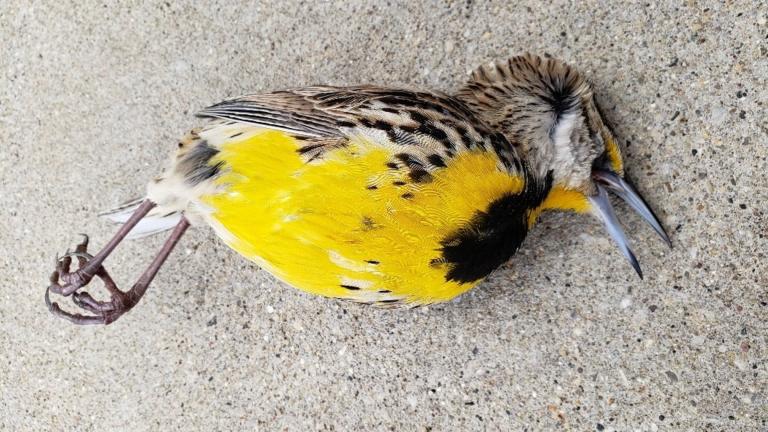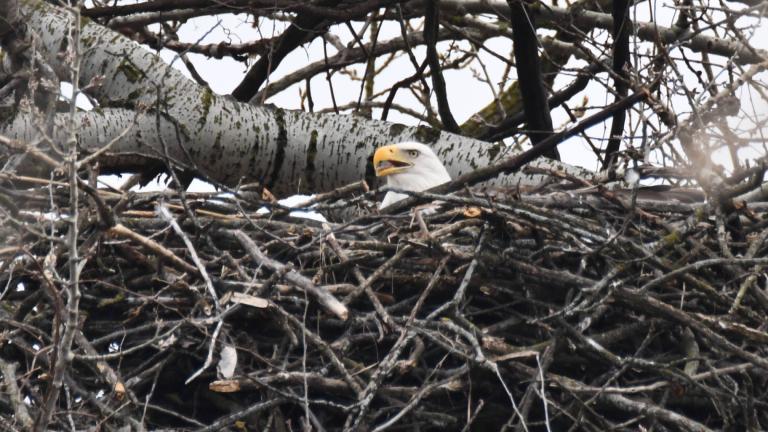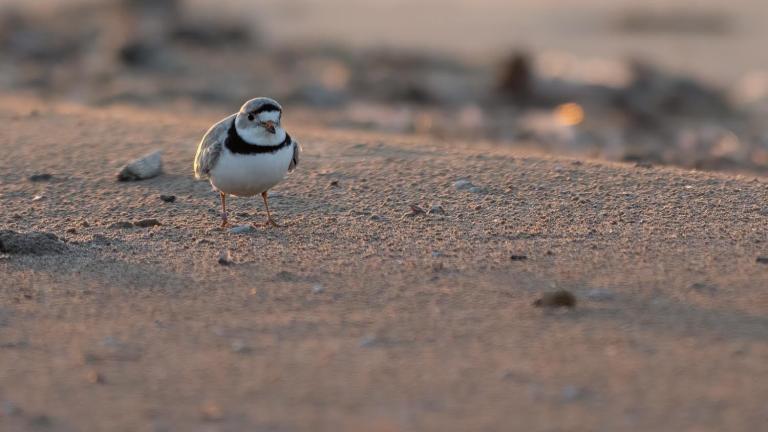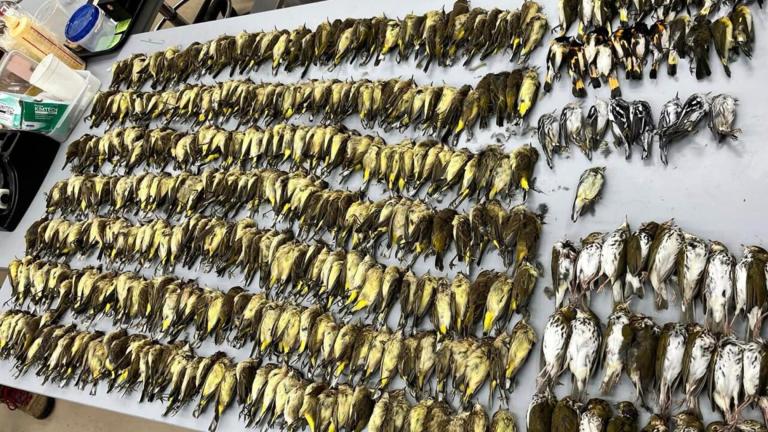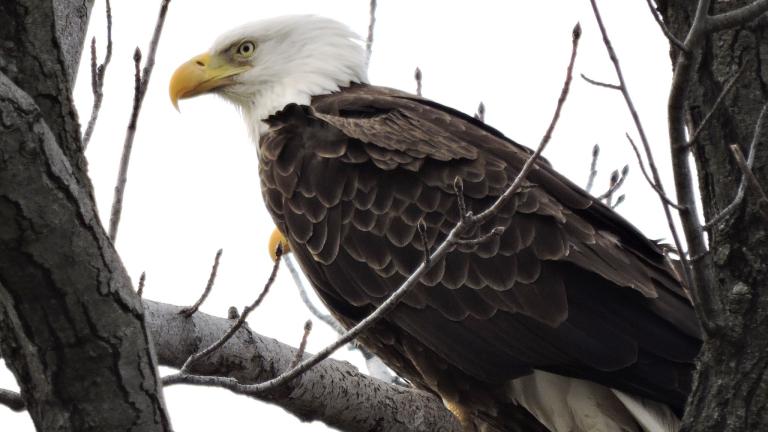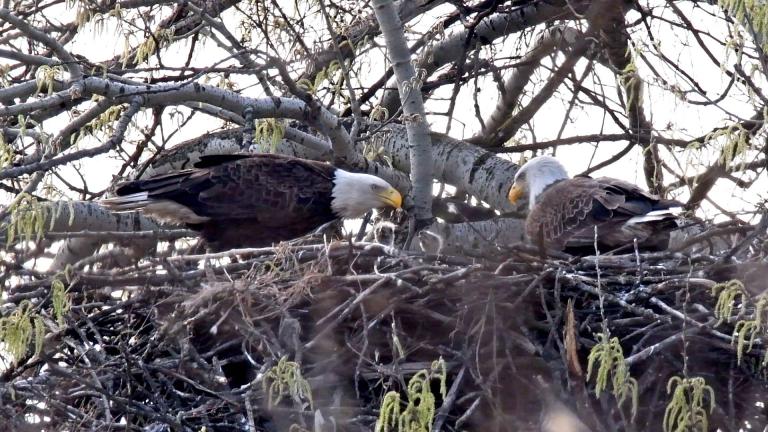 Eggs in the Field Museum’s collection. (Patty Wetli / WTTW News)
Eggs in the Field Museum’s collection. (Patty Wetli / WTTW News)
Whether simply dipped in food coloring or elaborately hand-painted with intricate designs, decorated eggs are a centuries-old tradition at Easter.
Nature’s been at it eons longer.
A look inside the Field Museum’s collection of eggs, which numbers in the tens of thousands, reveals an amazing range: from some the size of jellybeans, to others as large as footballs, some are glossy, some are speckled, and some are even shaped more like pears than eggs.
John Bates, curator of birds at the Field, shared a dozen of his favorites. Let’s get cracking.
1. Common murre
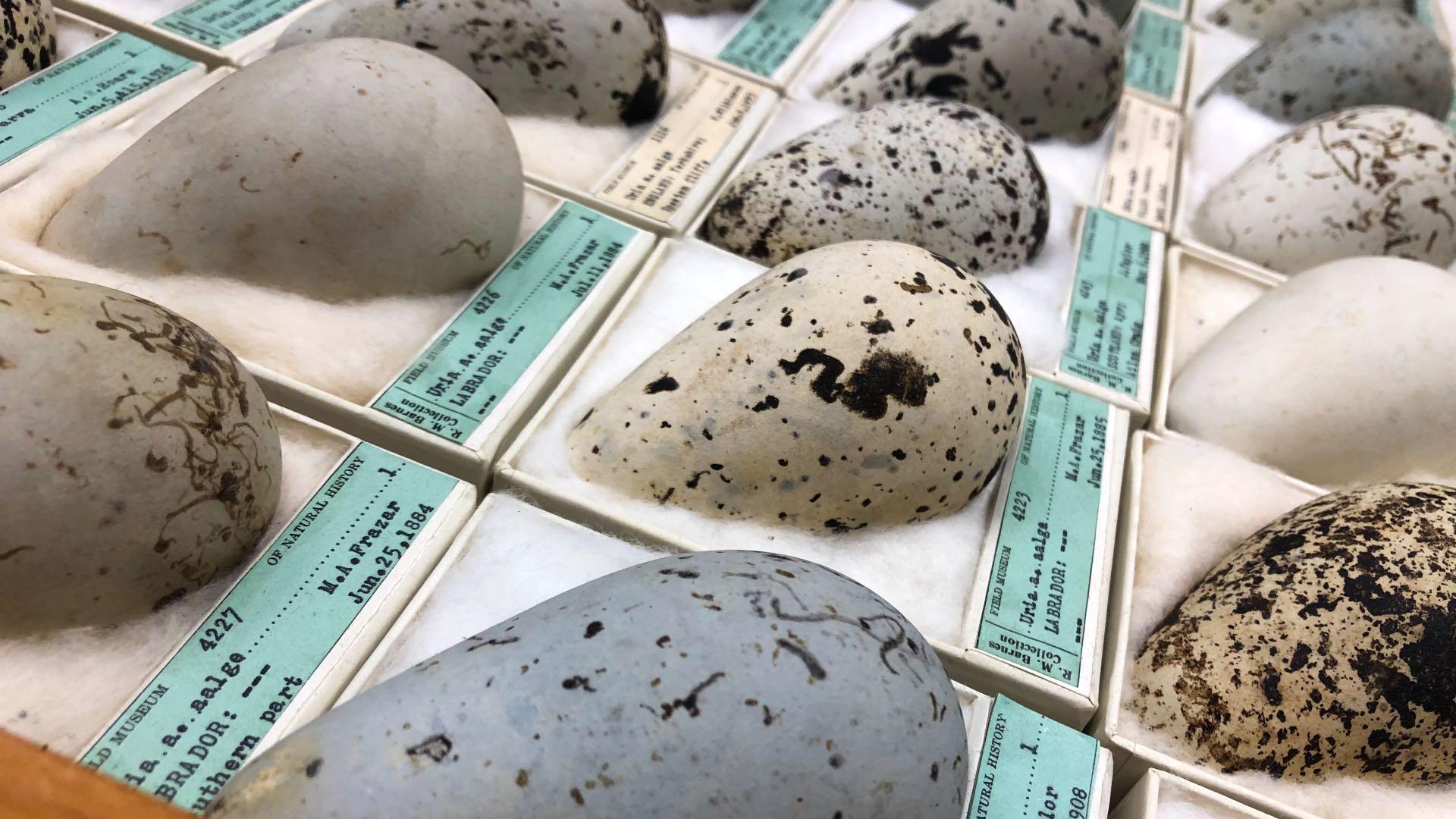 Common murre eggs. (Patty Wetli / WTTW News)
Common murre eggs. (Patty Wetli / WTTW News)
Common murres are found on the Atlantic and Pacific coasts of North America and their eggs are notable for multiple reasons. Each female produces her own pattern, which is thought to help parents spot which ones are theirs in crowded breeding grounds. The unusual shape — more bottom-heavy and less, well, egg-like — serves a purpose too: If an egg is nudged, it tends to spin rather than roll off the cliffs where murres nest.
2. Japanes bush warbler
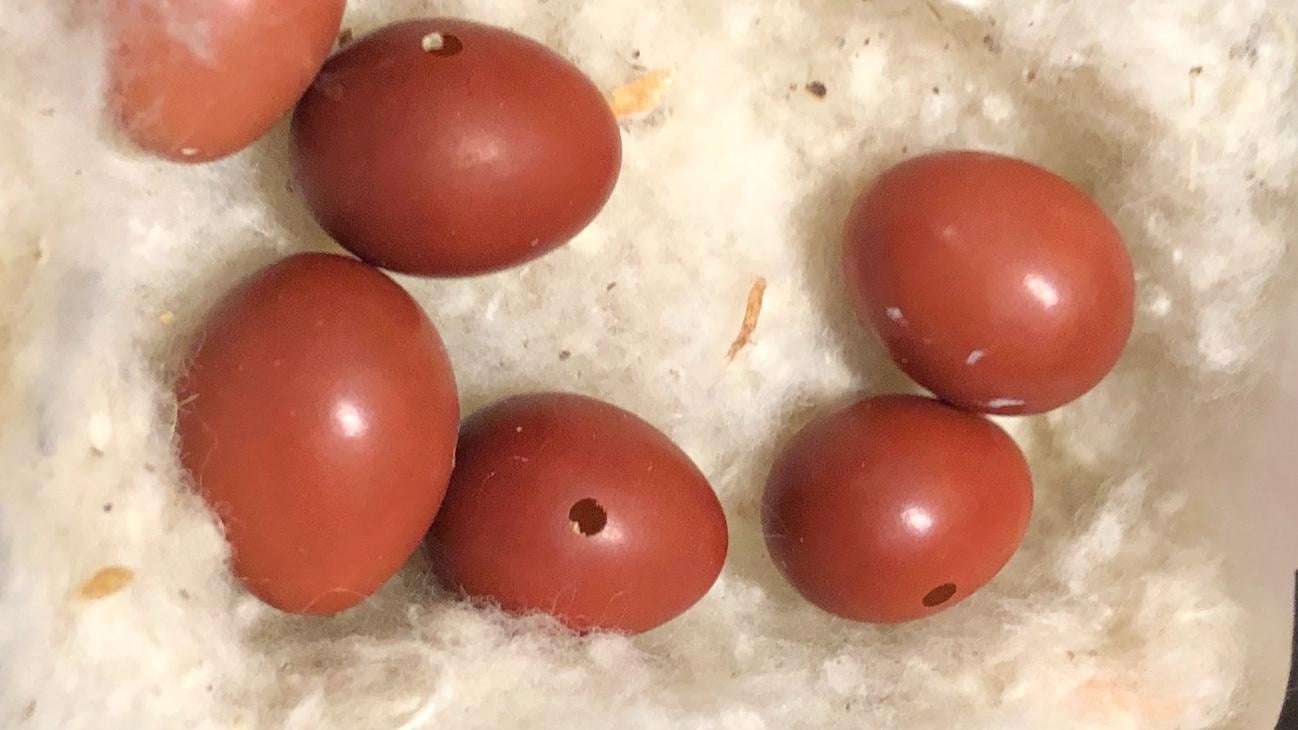 Japanese bush warbler eggs. (Patty Wetli / WTTW News)
Japanese bush warbler eggs. (Patty Wetli / WTTW News)
These terra cotta-colored eggs are particularly shiny. And no one really knows why, said Bates. “That’s a big debate,” he said. “Where does it come from and why would you want it?” Eggs have been largely overlooked in terms of scientific study and are an untapped resource of information, Bates said.
3. Guira cuckoo
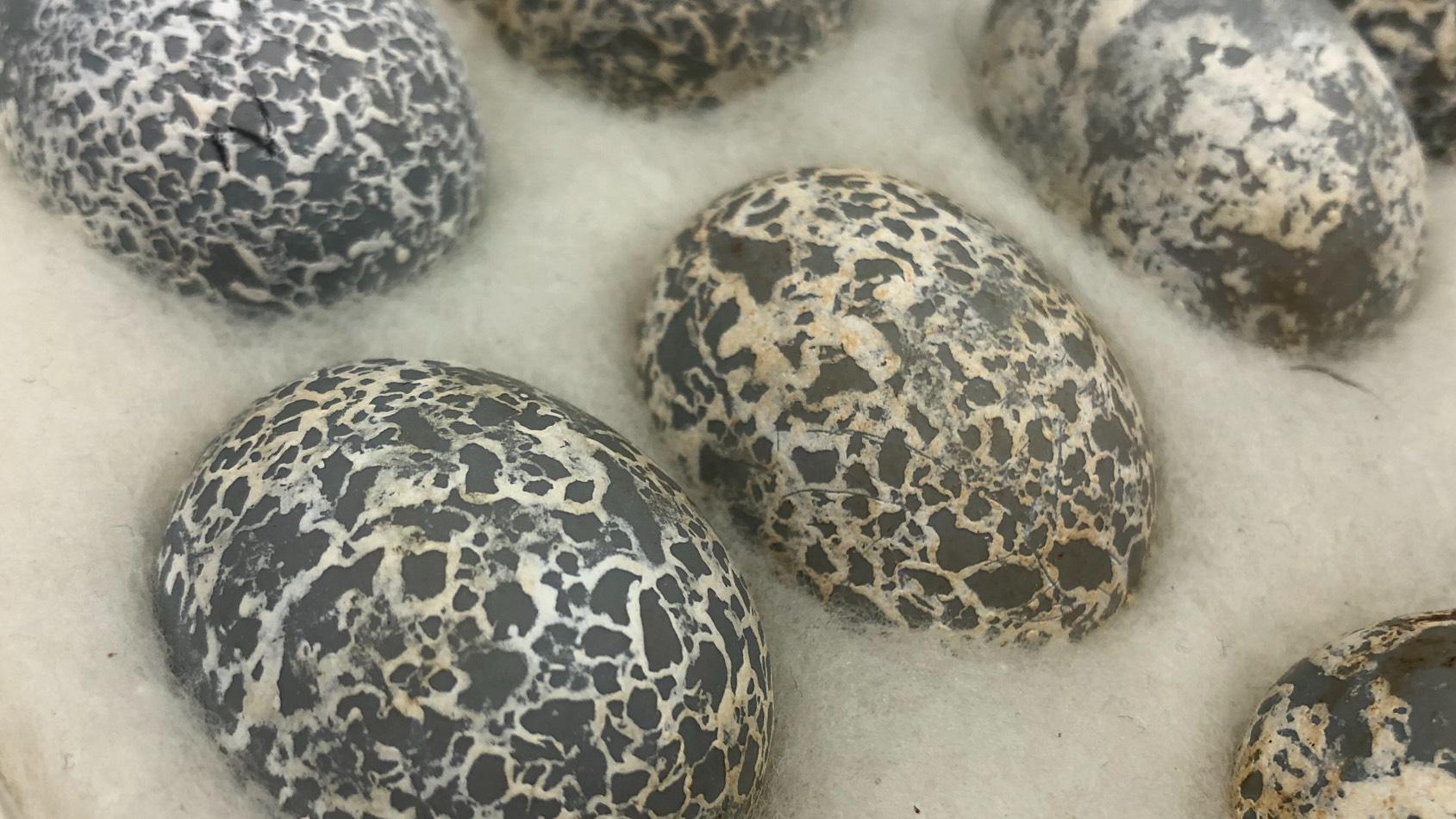 Guira cuckoo eggs. (Patty Wetli / WTTW News)
Guira cuckoo eggs. (Patty Wetli / WTTW News)
There can be as many as 20 eggs in a guira cuckoo nest, not because any one female is that prolific but because they share communal nests. These crackled eggs owe their appearance to a chalky white layer deposited over a blue-green base. During incubation, the powdery layer begins to wear off in patches, revealing the color underneath.
4. Oystercatcher
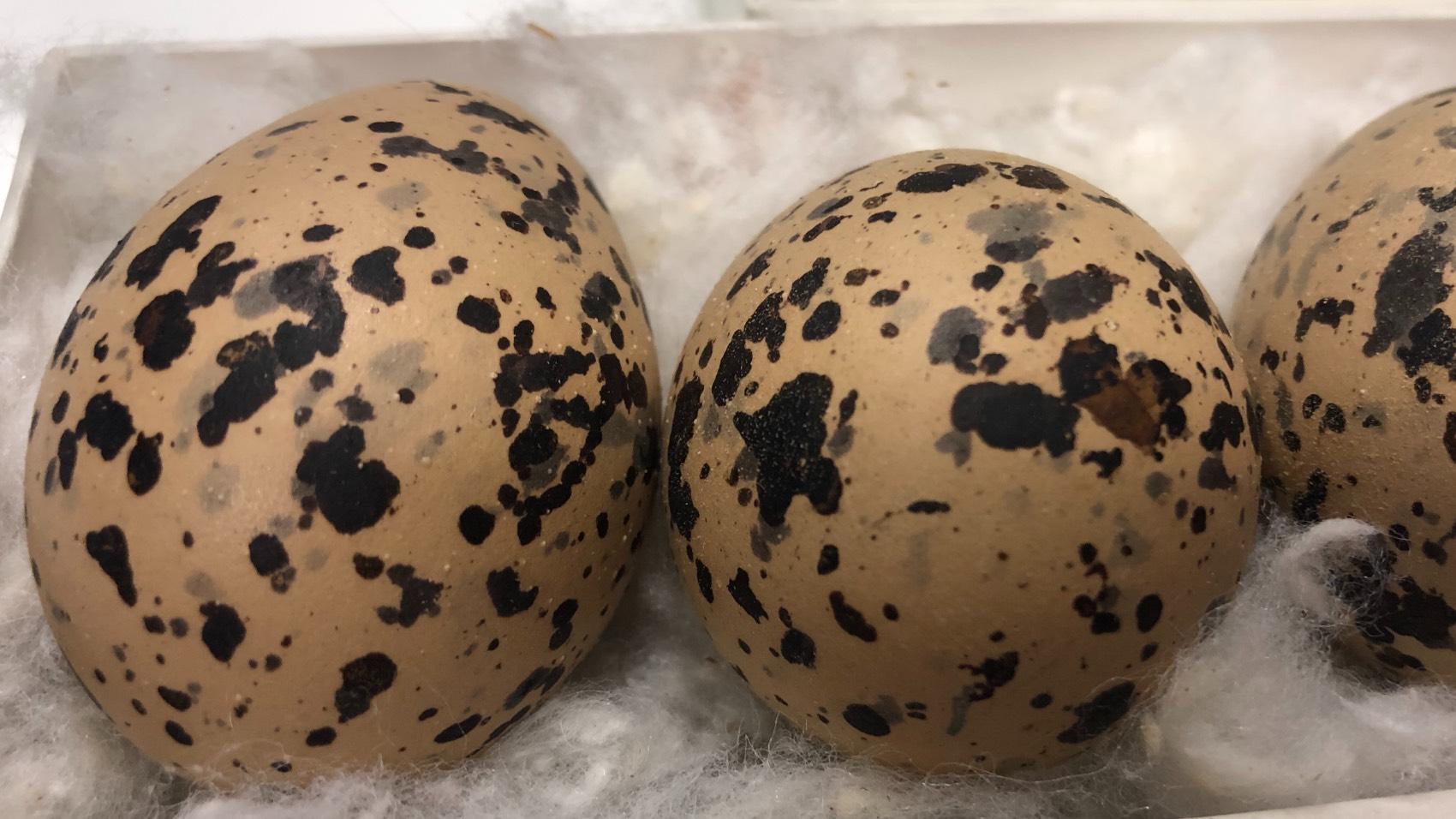 Oystercatcher eggs. (Patty Wetli / WTTW News)
Oystercatcher eggs. (Patty Wetli / WTTW News)
Birds that nest on the ground tend to lay eggs in shades of brown, said Bates. “In some cases, we know very clearly it’s designed for camouflage,” he said.” Oystercatchers live on shorelines and nest in the vegetation on beaches, where these eggs would blend in unobtrusively.
5. Catbird
 Catbird eggs. (Patty Wetli / WTTW News)
Catbird eggs. (Patty Wetli / WTTW News)
Blue is most associated with robin’s eggs, so much so that Crayola has a crayon shade named “robin’s egg blue.” But plenty of other birds, including the catbird, lay eggs in variations of the hue.
6. Grackle
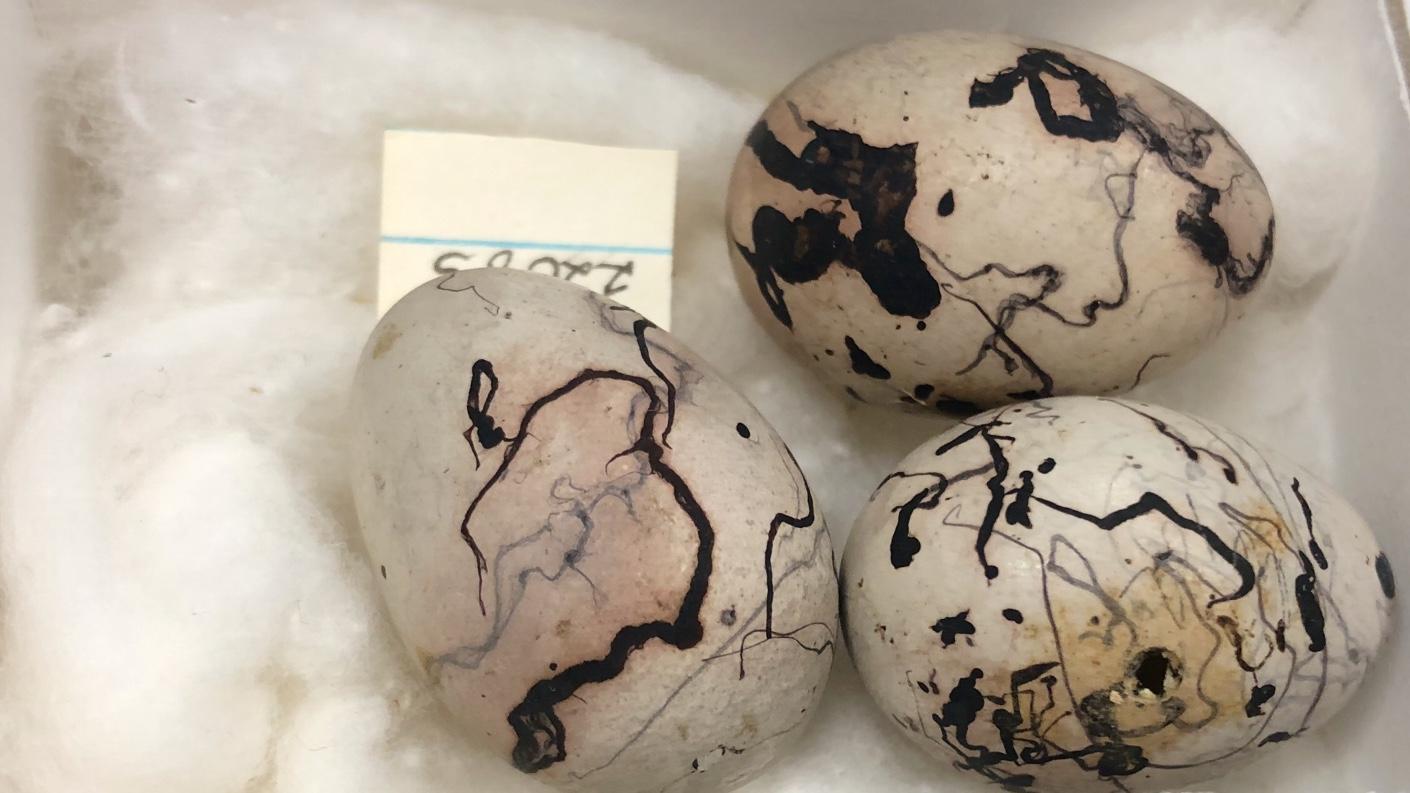 Grackle eggs. (Patty Wetli / WTTW News)
Grackle eggs. (Patty Wetli / WTTW News)
It takes about 24 hours for a bird to build a single egg, and females need to consume extra calcium in order to produce the shell. The colors, squiggles and patterns are placed on the egg toward the very end, in a process that’s still not well understood.
7. Cactus wren
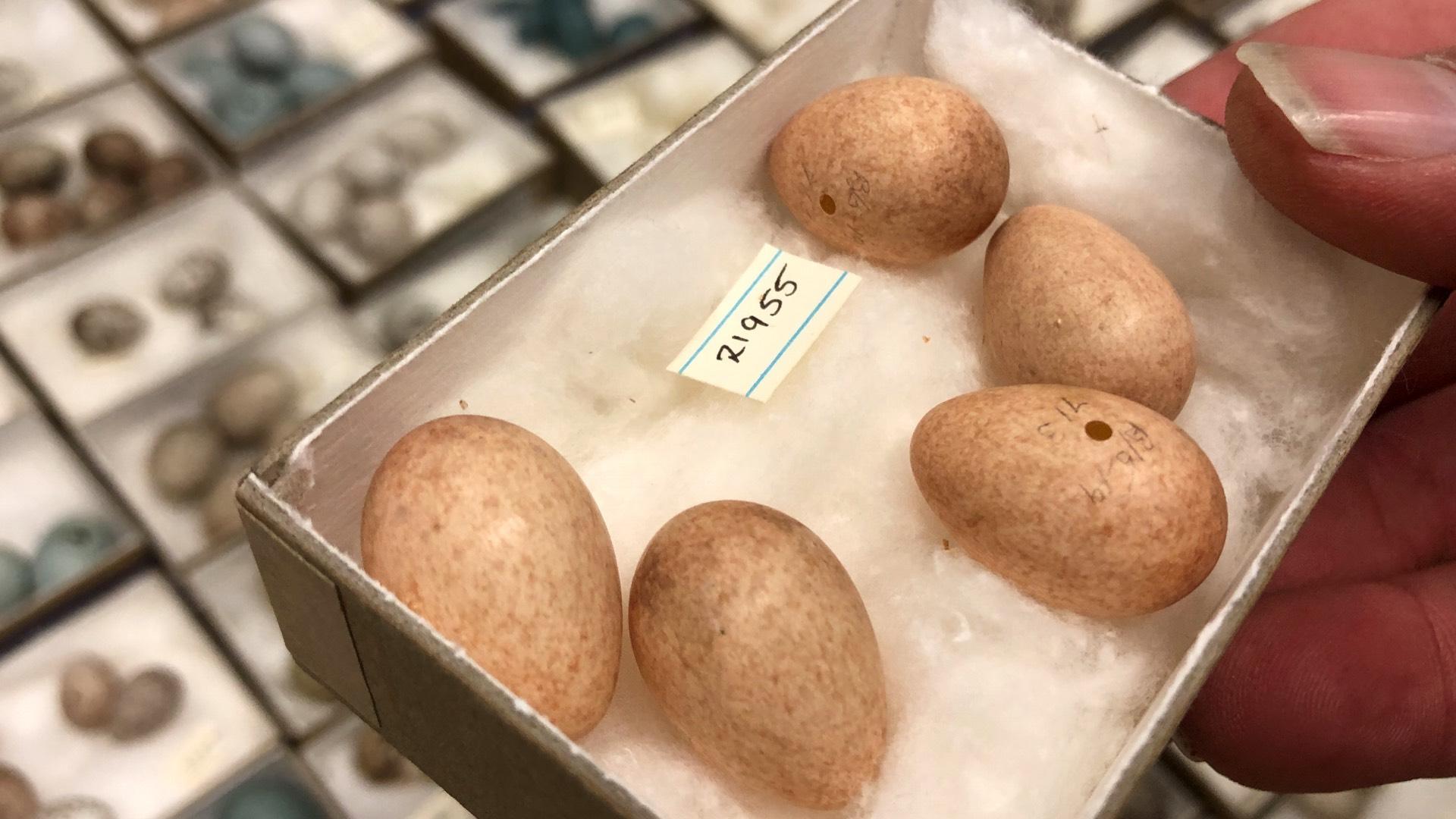 Cactus wren eggs. (Patty Wetli / WTTW News)
Cactus wren eggs. (Patty Wetli / WTTW News)
So where are the magenta and chartreuse eggs? Well, nature’s palette is actually fairly limited, according to the Cornell Bird Lab. Birds only use two pigments: one that produces reddish-brown colors — as seen in these pinkish cactus wren eggs — and one that produces blues and greens. All the variety on display comes from different combinations — more of one, less or none of the other — of the two.
8. Cedar waxwing
 Cedar waxwing eggs. (Patty Wetli / WTTW News)
Cedar waxwing eggs. (Patty Wetli / WTTW News)
Here’s a fun fact from the Cornell Lab: Egg shells have pores. Depending on the species, the number can range from hundreds to tens of thousands. Eggs will lose roughly 18% of their mass through these pores, mostly in the form of water, between the time of laying and hatching.
9. Northern jacaranda
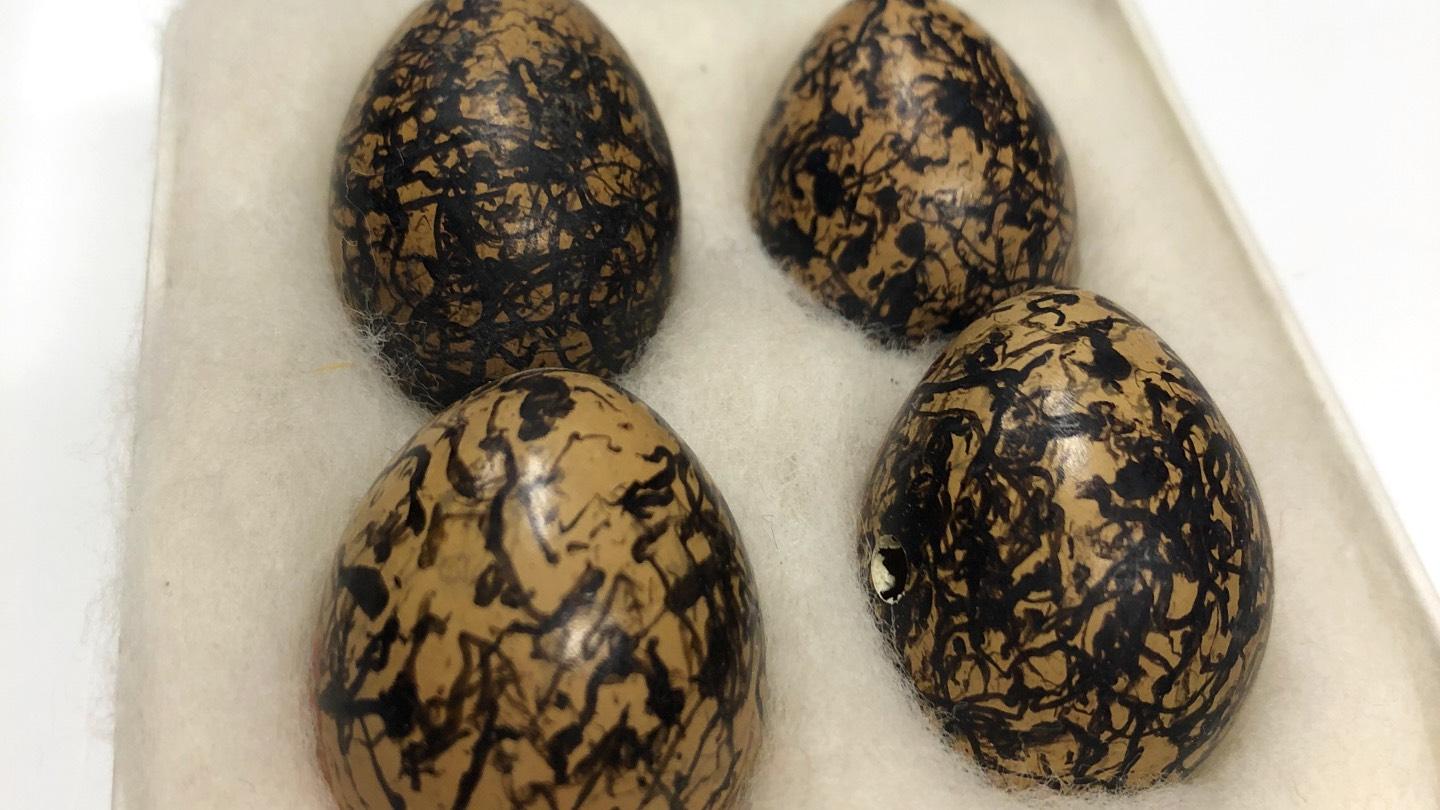 Northern jacaranda eggs. (Patty Wetli / WTTW News)
Northern jacaranda eggs. (Patty Wetli / WTTW News)
There are a number of mysteries about eggs that scientists have yet to resolve. There are competing hypotheses, for example, surrounding darker pigmented eggs, and whether it protects the embryo from harmful UV light or whether it causes the egg to heat up more than lighter coloring. Another theory is that paler-than-normal colors could indicate a nutritional deficiency in the female.
10. Peregrine falcon
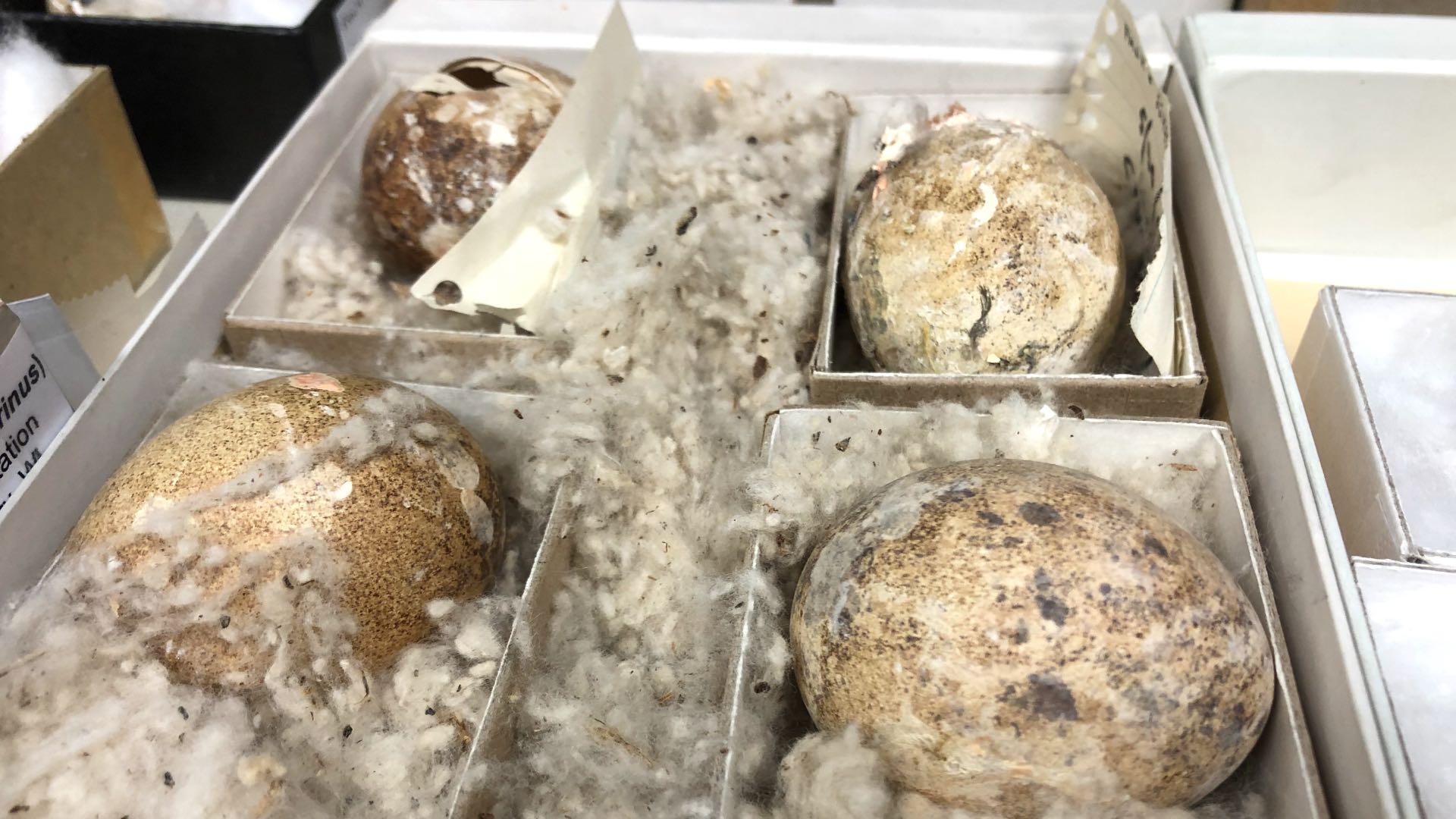 Pergerine falcon eggs. (Patty Wetli / WTTW News)
Pergerine falcon eggs. (Patty Wetli / WTTW News)
Egg collecting was a popular hobby in the late 19th and early 20th century, and most of the Field’s specimens date to that period. But the museum’s peregrine falcon eggs are a recent addition, as part of the Chicago Peregrine Program, overseen by Mary Hennen. Hennen salvages non-viable eggs for later study.
11. Emu
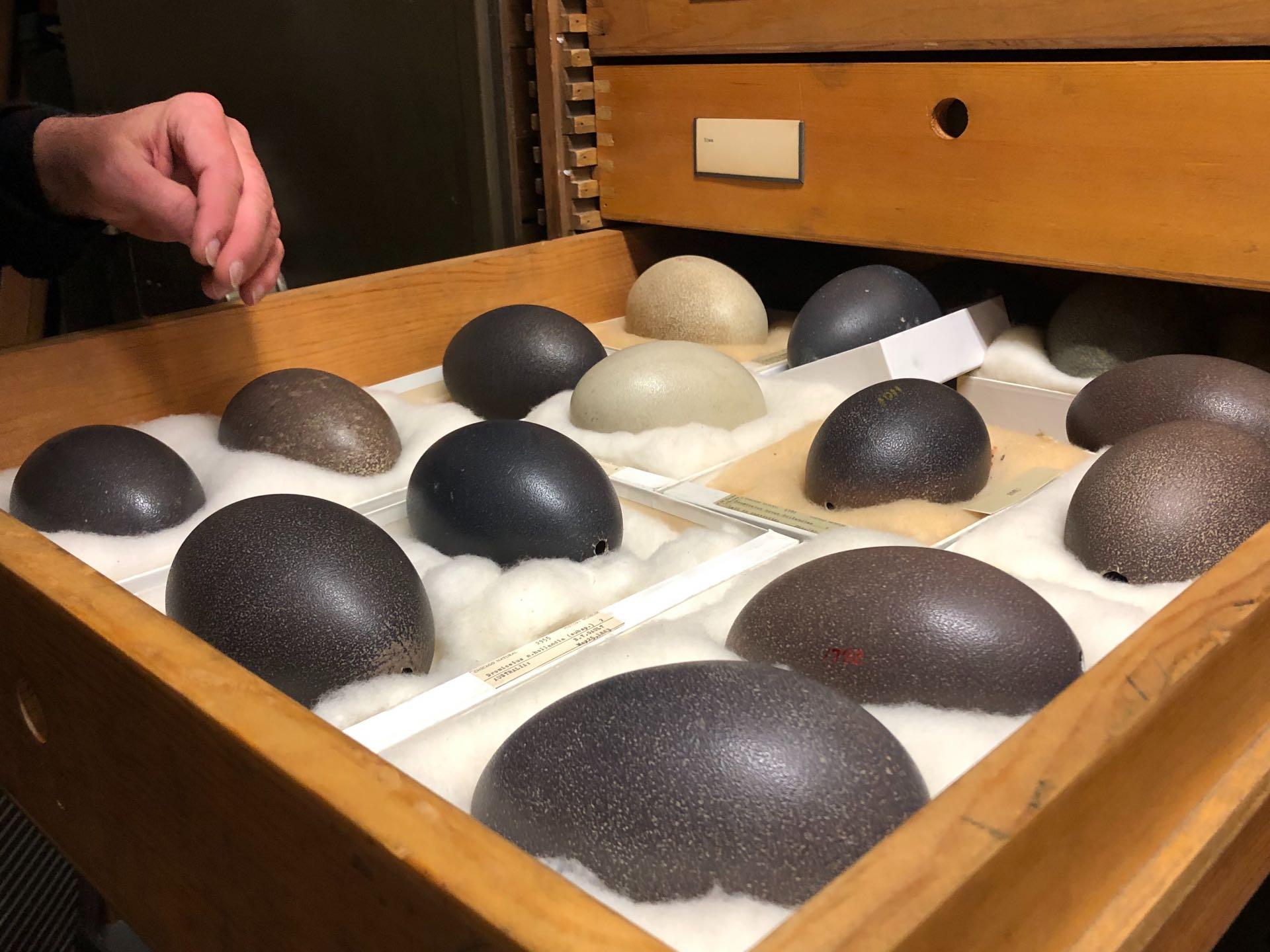 Emu eggs. (Patty Wetli / WTTW News)
Emu eggs. (Patty Wetli / WTTW News)
The emu is second only to the ostrich in terms of height so, not surprisingly, its eggs are whoppers. These shells are rock solid and can withstand a strong rap of a person’s knuckles, with a look and texture akin to cast iron.
12. Elephant bird
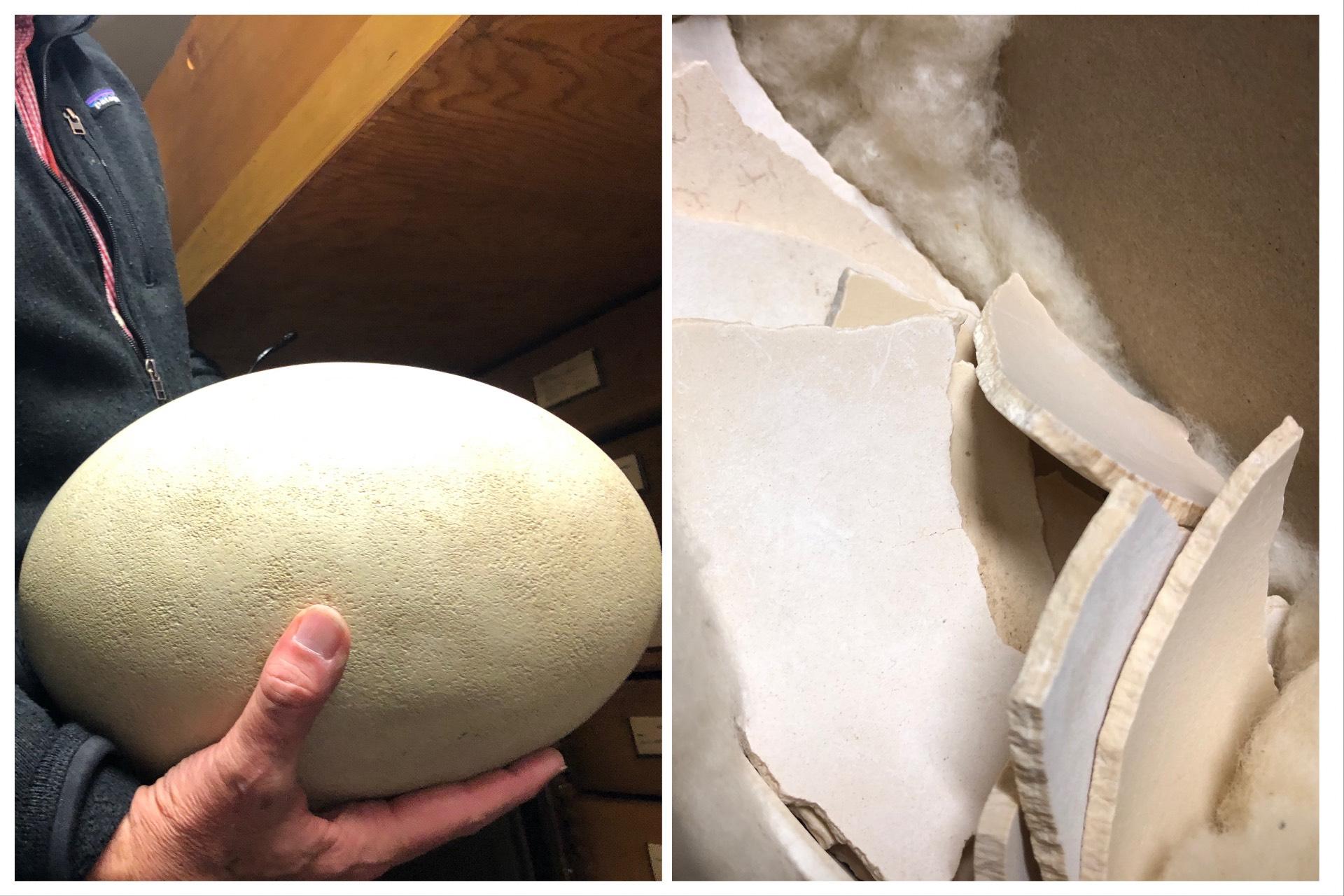 Elephant bird egg replica (l) and shards from an actual elephant bird egg. (Patty Wetli / WTTW News)
Elephant bird egg replica (l) and shards from an actual elephant bird egg. (Patty Wetli / WTTW News)
The flightless elephant bird is often described as the “largest bird that ever lived.” It made its home on Madagascar and has been extinct for at least 800 years. The Field Museum has a replica elephant bird egg in its collection (l) — like the basketball to an emu’s softball — as well as bits and pieces of an actual eggshell. Shards are still occasionally found on beaches in Madagascar, Bates said.
Contact Patty Wetli: @pattywetli | (773) 509-5623 | [email protected]

